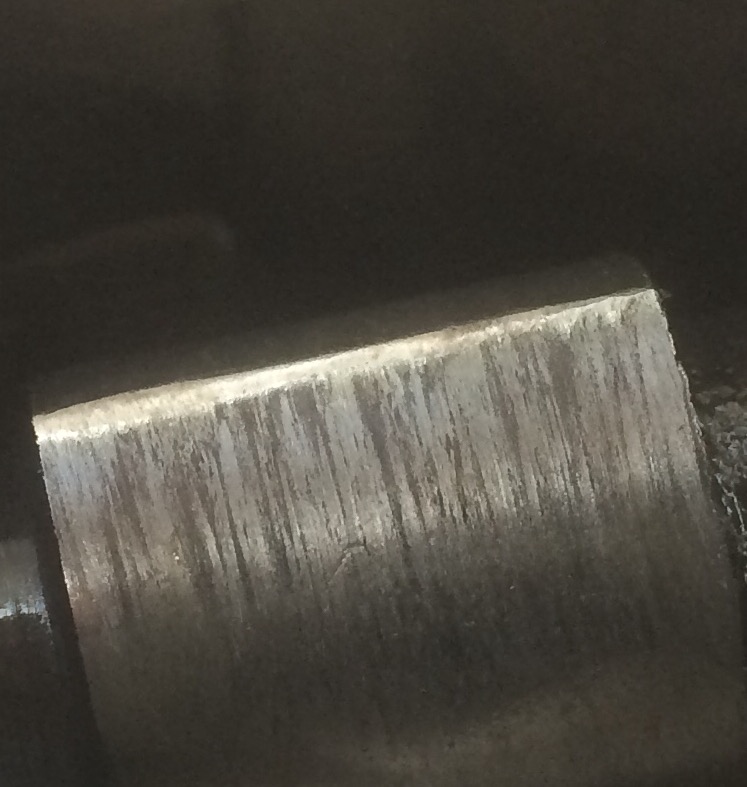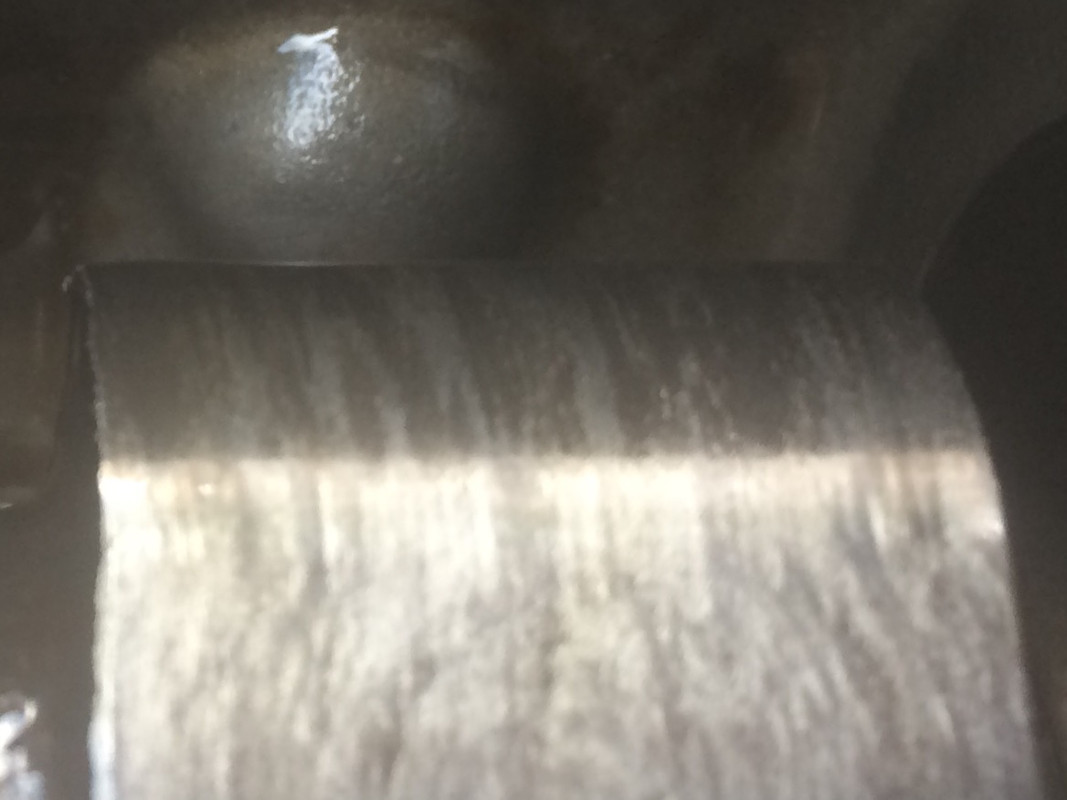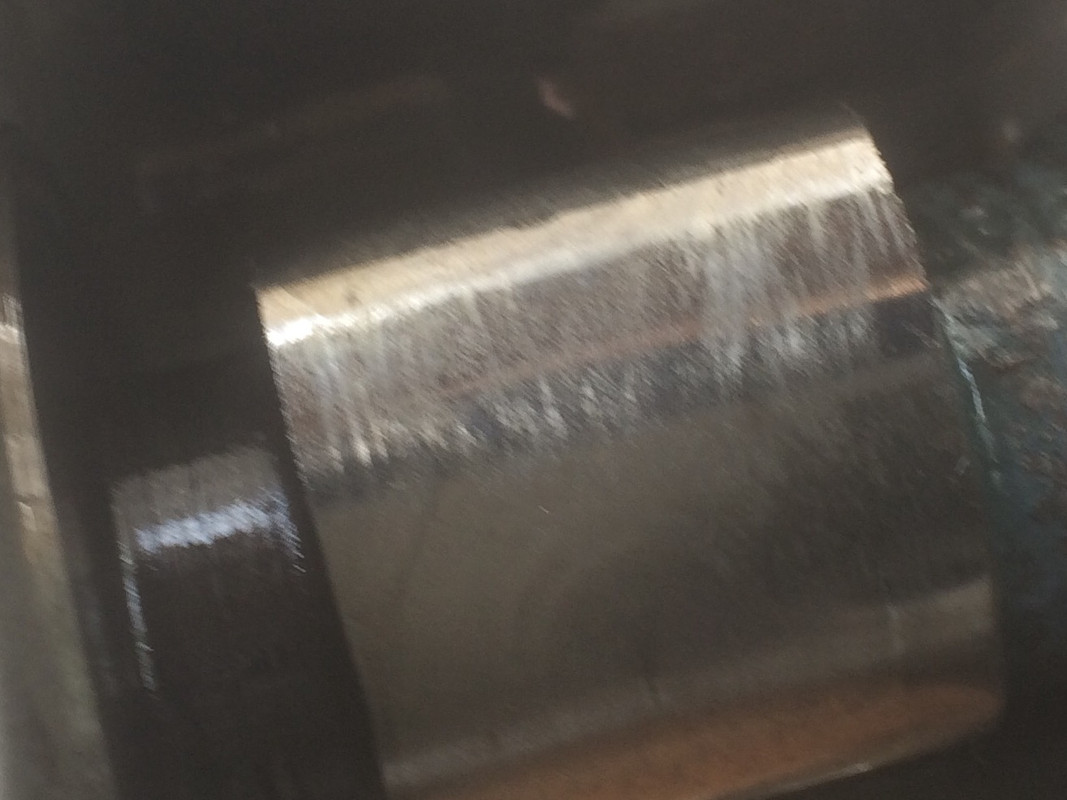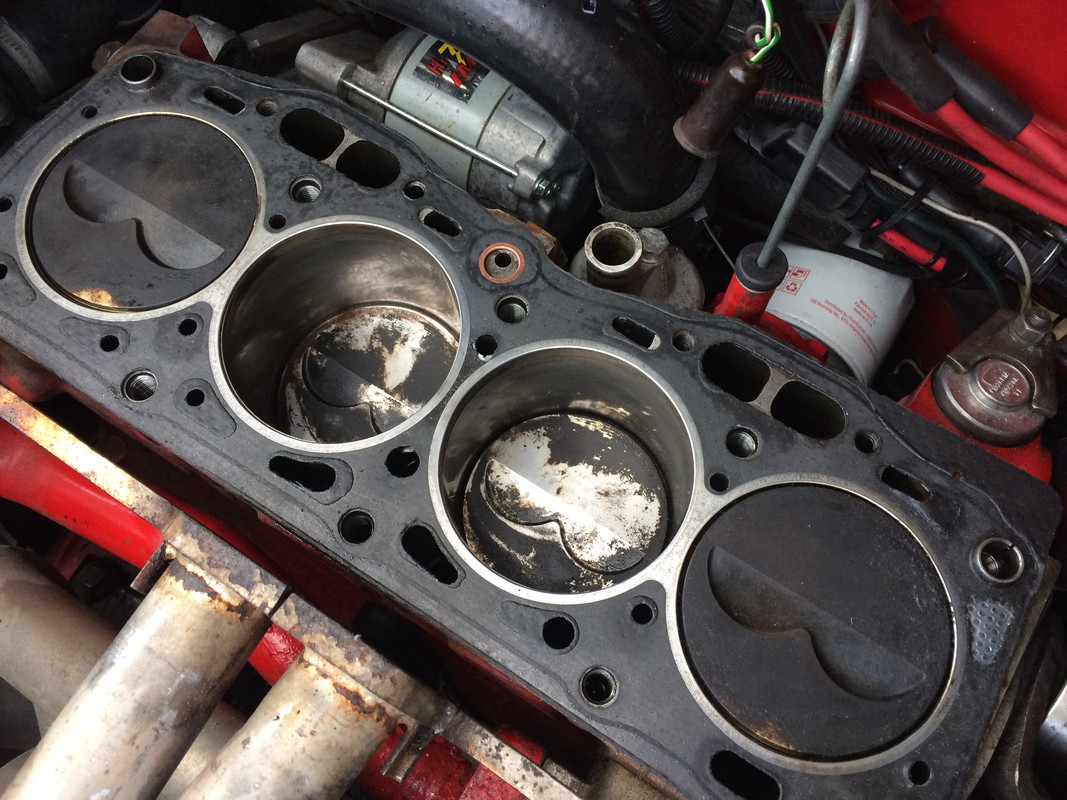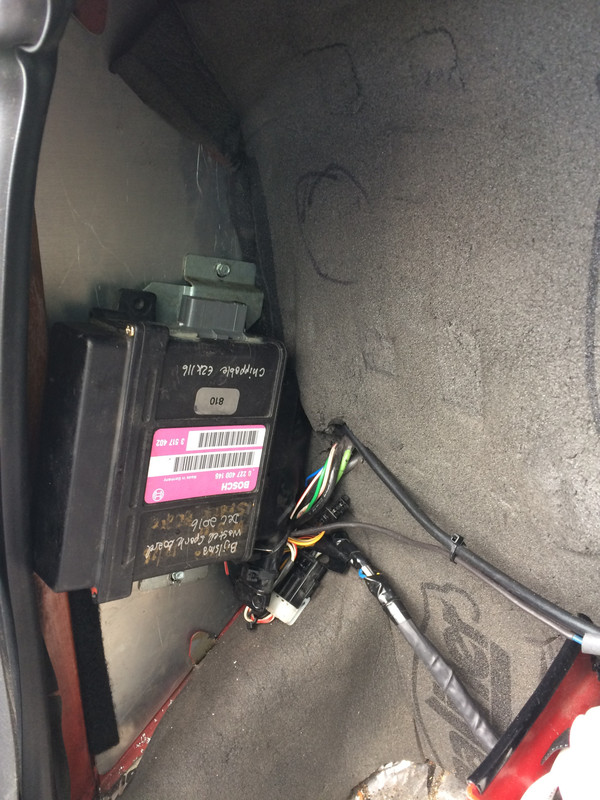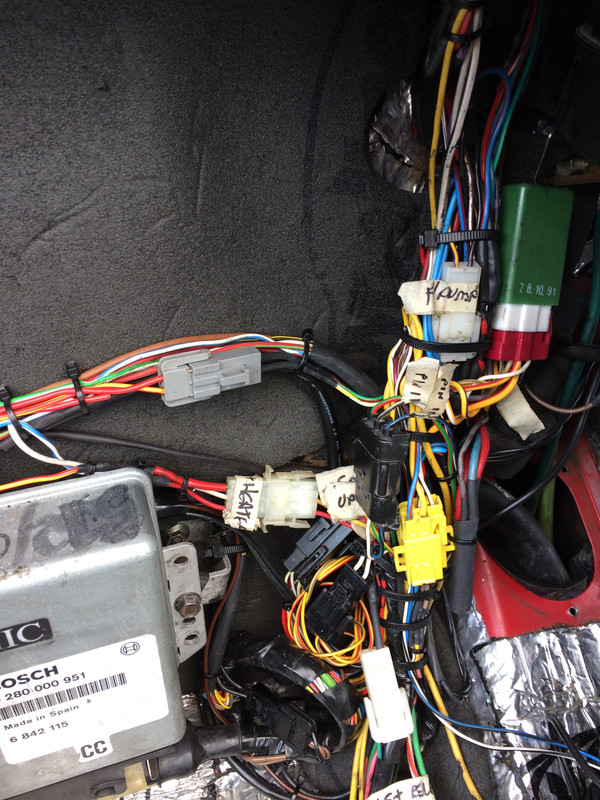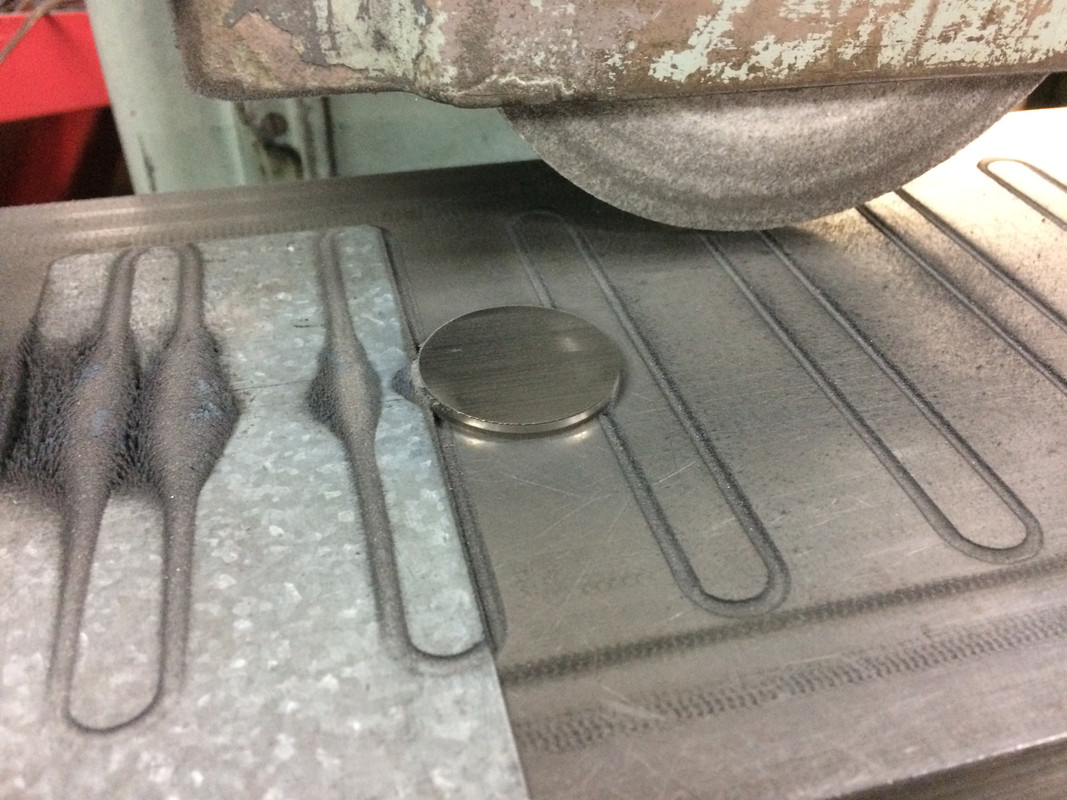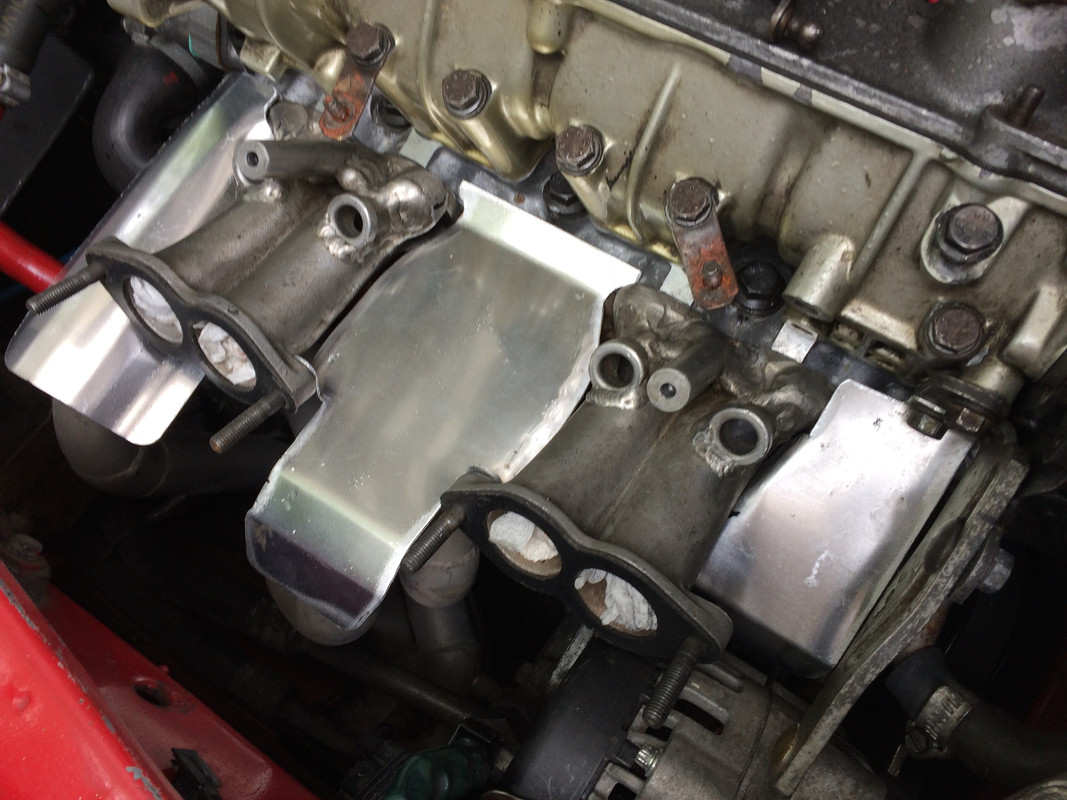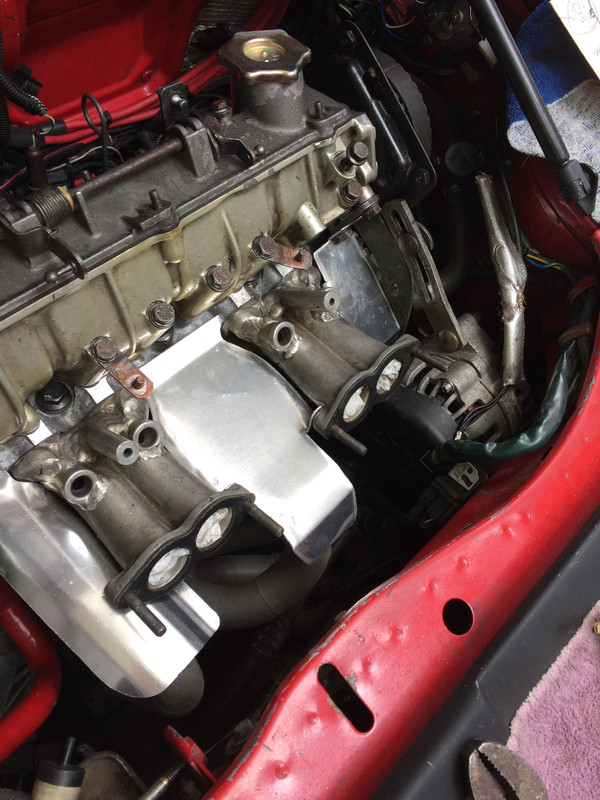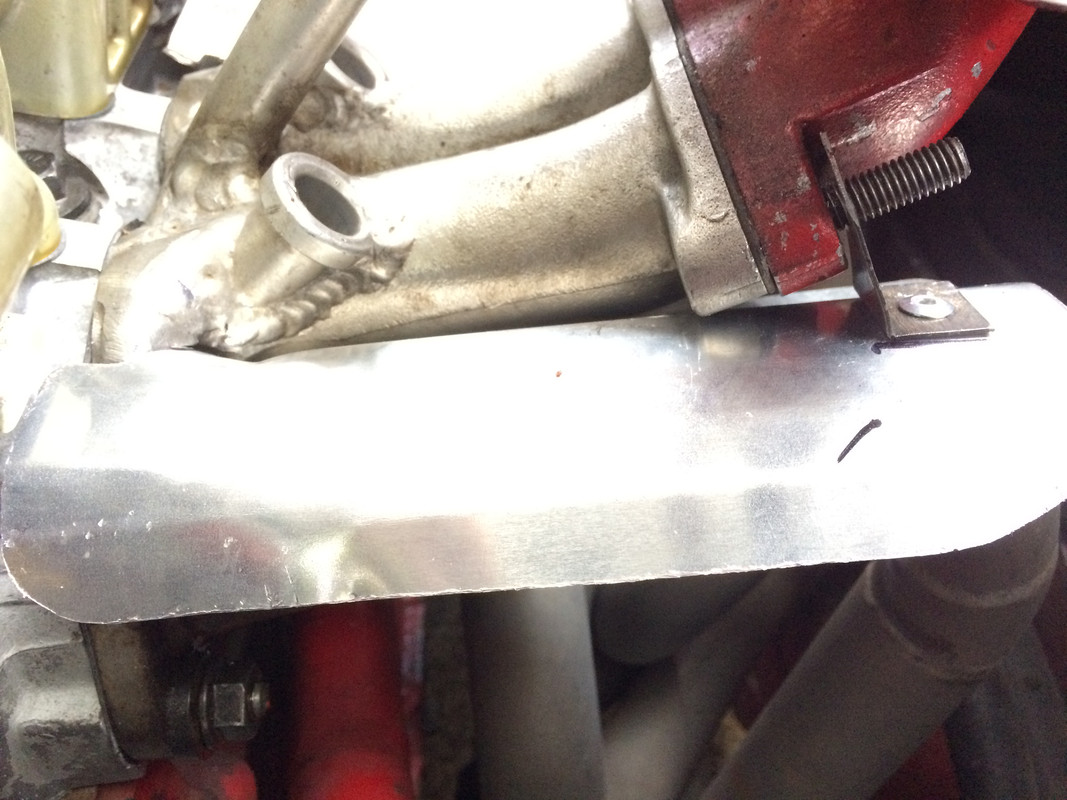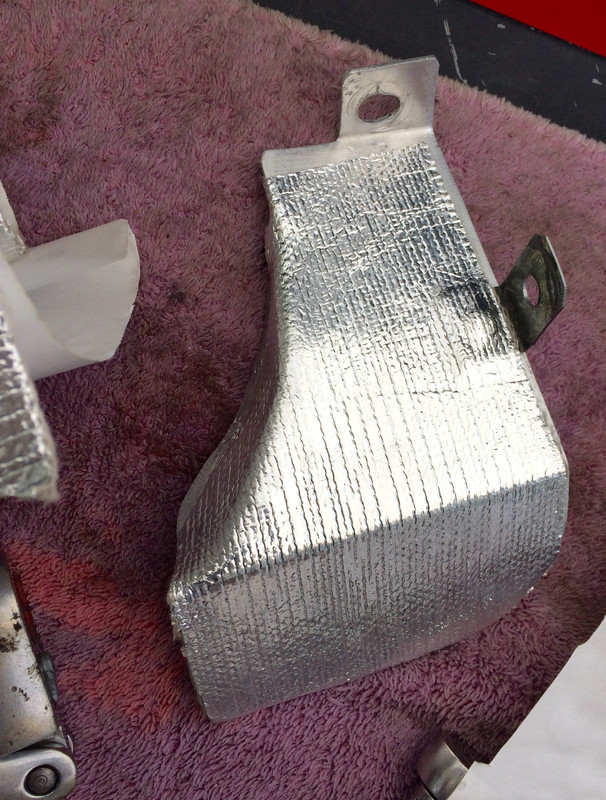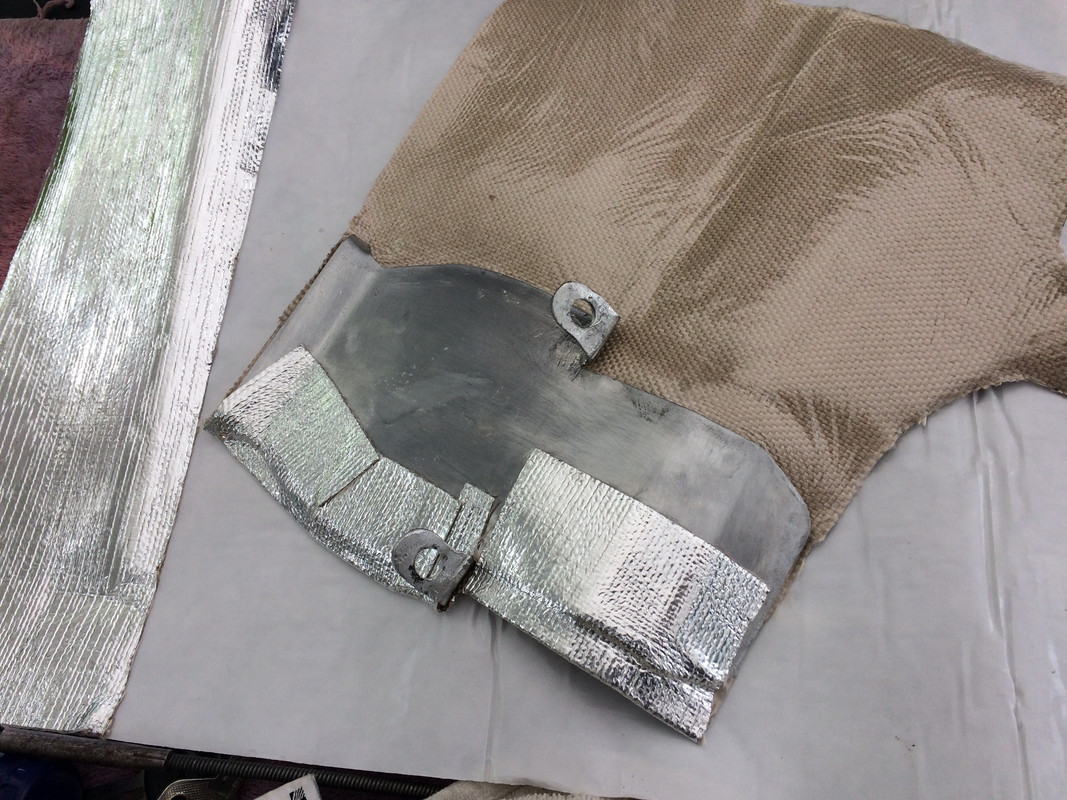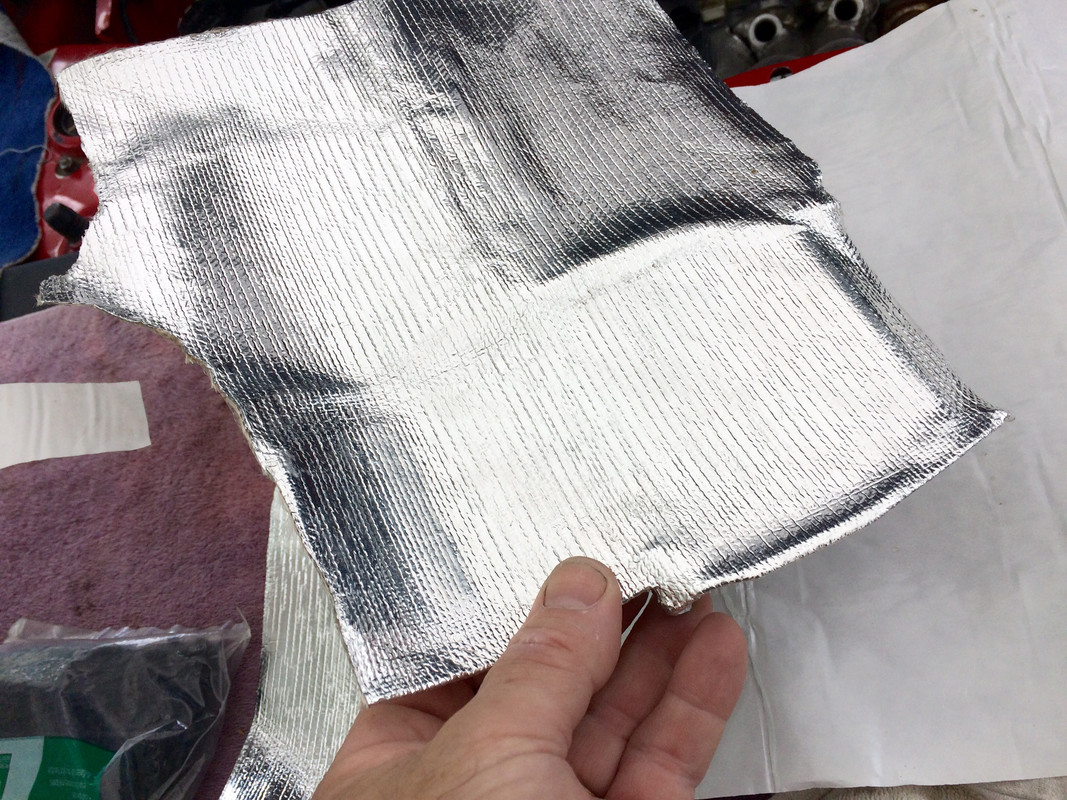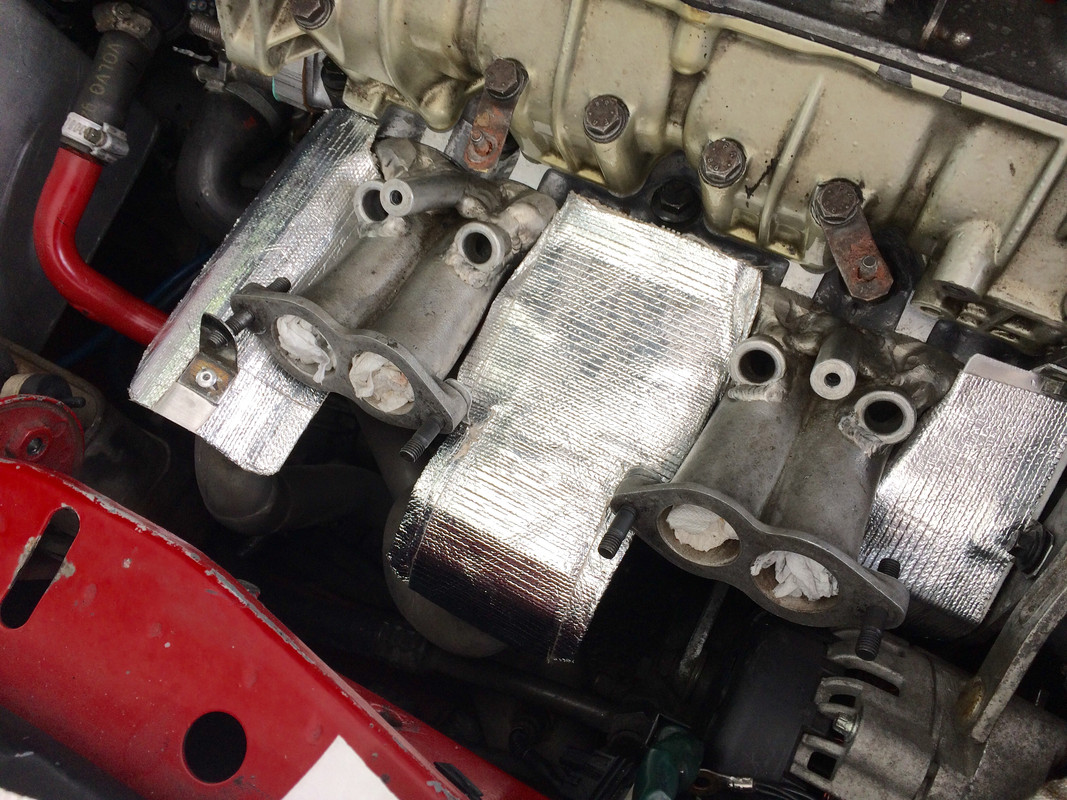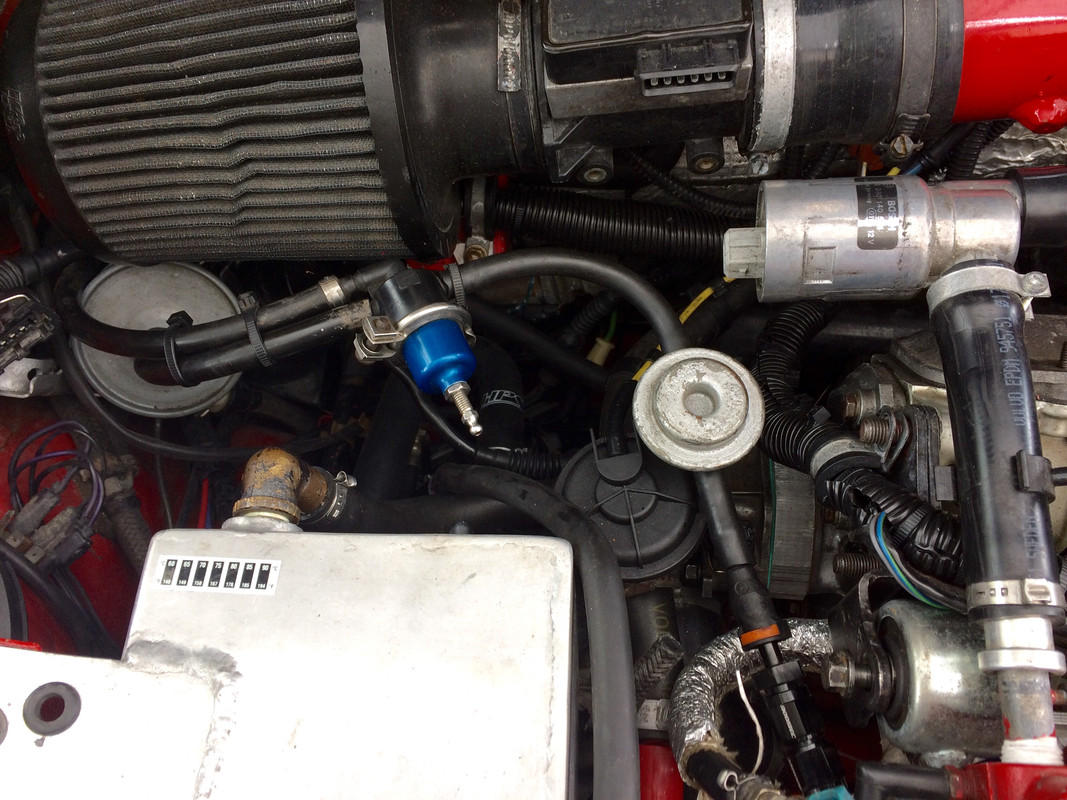Dan Sarandrea (Phila)
Waitin' On Parts...
Instead of one contiguous heat shield, consider making three smaller ones and attaching them to the underside of the three components you would want to shield from radiant heat from the header, namely the underside of the two intake runners and the plenum. Look to the motorcycle world for sources of clamp-on exhaust pipe shields.
My theory is that one large shield would hinder air from flow from underneath the engine compartment and from the side scoops, up thru the headers, and out the top thru the engine cover. You have re-implemented your engine cover exhaust fan, but it appears to be on the left side of the cover......if you could move it to the right side directly over the manifolds, I would think that would certainly have to aide in pulling air out of the hottest area of the engine compartment.
You could supplement air flow around the manifolds by using the right side air scoop take-off originally for the alt cooling duct, re-establish that duct, and perhaps mash it up with the stock post-run injector cooling duct T that was originally nestled between the runners, giving you a "breath of fresh air" right into the intake area.
My theory is that one large shield would hinder air from flow from underneath the engine compartment and from the side scoops, up thru the headers, and out the top thru the engine cover. You have re-implemented your engine cover exhaust fan, but it appears to be on the left side of the cover......if you could move it to the right side directly over the manifolds, I would think that would certainly have to aide in pulling air out of the hottest area of the engine compartment.
You could supplement air flow around the manifolds by using the right side air scoop take-off originally for the alt cooling duct, re-establish that duct, and perhaps mash it up with the stock post-run injector cooling duct T that was originally nestled between the runners, giving you a "breath of fresh air" right into the intake area.


